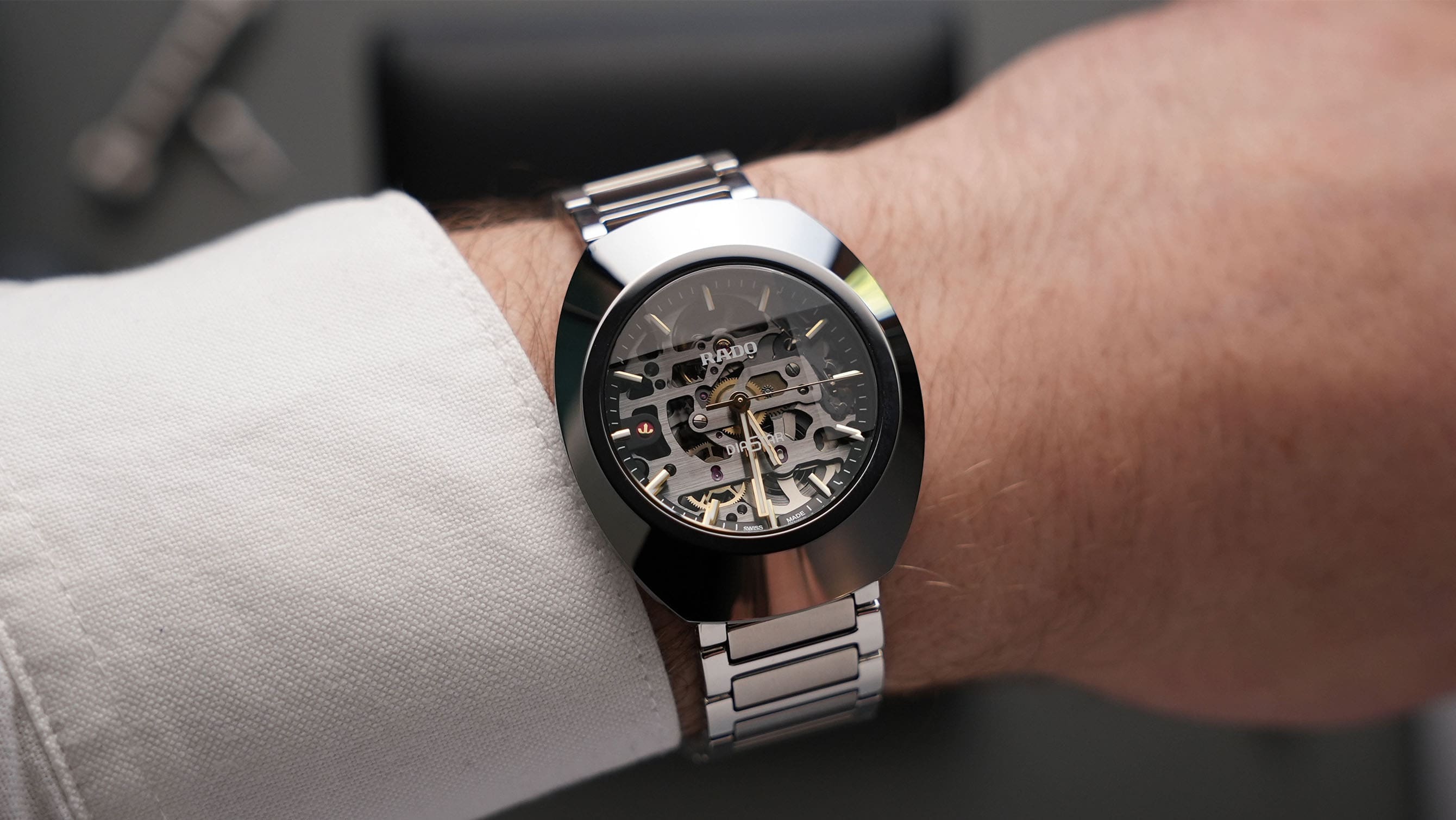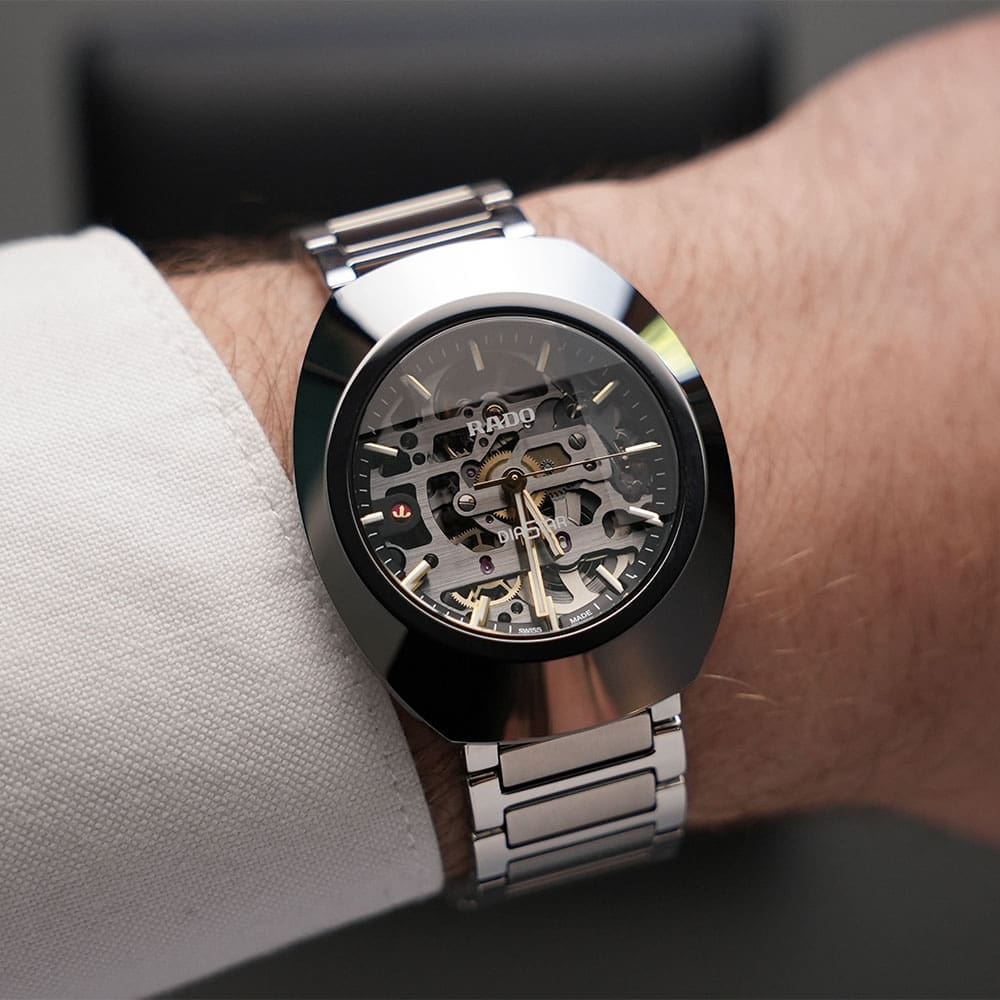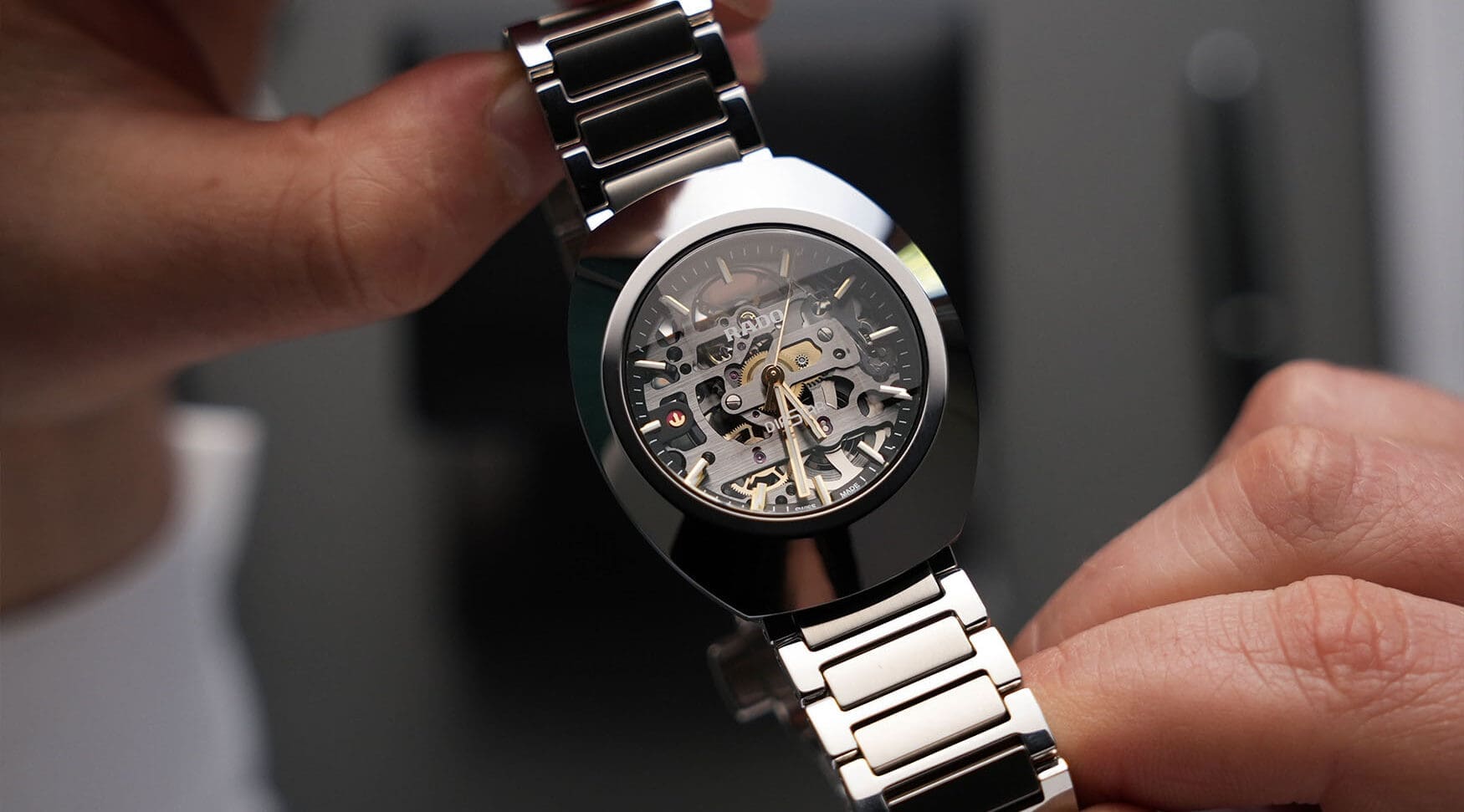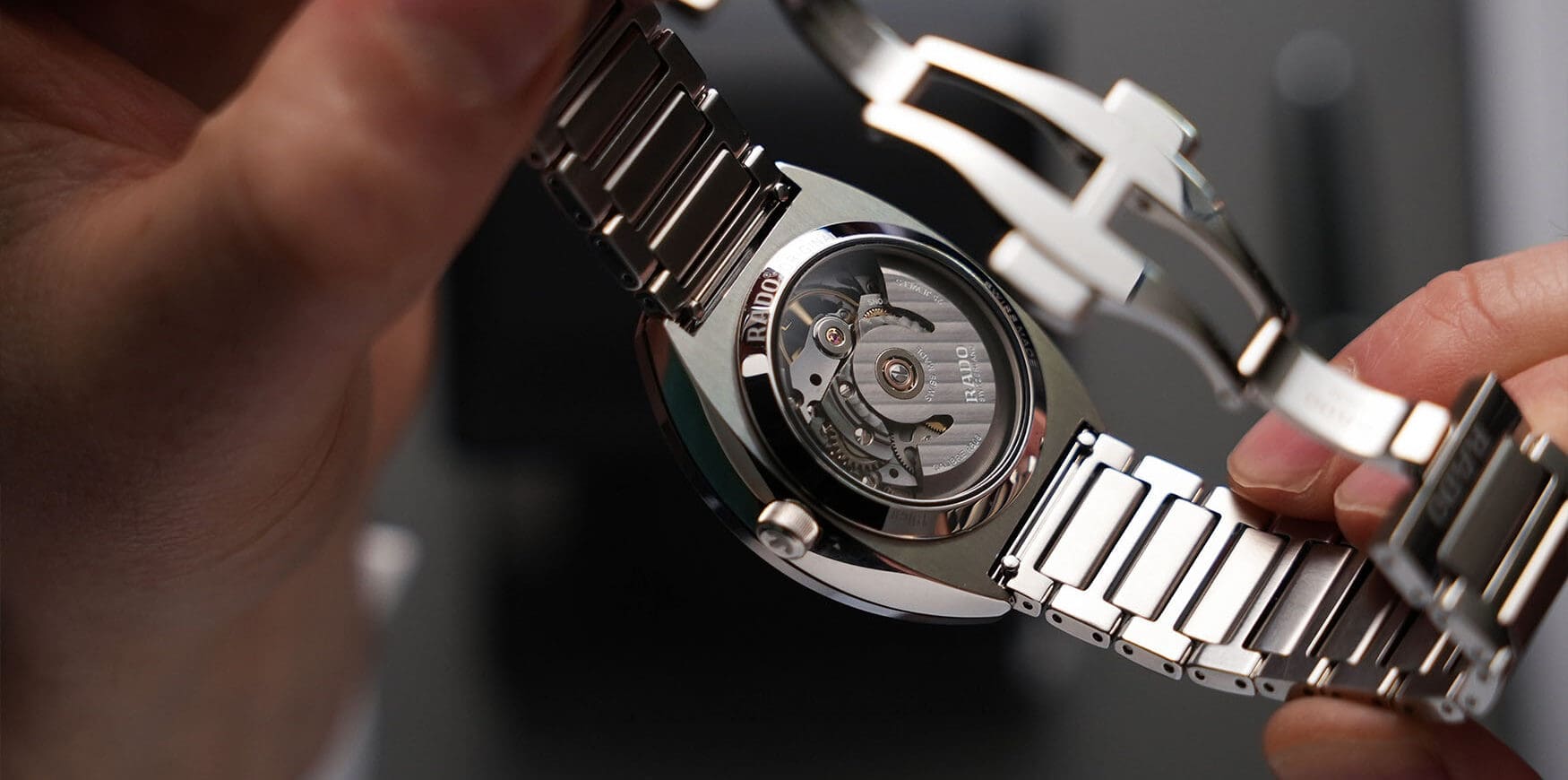Rado DiaStar Original Skeleton
Fergus NashRado’s watchmaking journey is a curious one, and it’s surprising that their achievements aren’t cause for more popularity. Between creating the first scratch-resistant watch in 1962 and the world’s hardest watch possible in 2005, their quest for blemish-free watches is simultaneously an artistic and technological endeavour. While that 1962 release was only made of tungsten carbide common in tooling, it kickstarted the genre which has led to the development of ceramics and even sapphire watch cases that are now everywhere. Among the latest developments is the Rado DiaStar Original Skeleton, blending the retro flair of the ‘60s with modern technology.
The case
The Rado DiaStar wasn’t just revolutionary because of its material, but even in the experimental 1960s, it was an eccentric design. The sloped, ovate case has a silhouette reminiscent of a turtle shell but with sleek, uninterrupted curves. It has changed subtly since the 1962 original, with slightly sharper corners as it flattens towards the bracelet. It’s a shape that retains much of its sophistication despite the initial strangeness, with a healthy dose of retro-futurism activating some nostalgia.
Of course, it couldn’t be a true homage to the original Rado DiaStar if it wasn’t scratch-resistant to some degree, and Rado have elected to use their Ceramos material. Ceramos was developed in 2011 as a hybrid ceramic-metal alloy which could be injection-moulded to any desired case shape, such as the monobloc case of the Rado True Thinline. The Rado DiaStar Original Skeleton’s sandwich construction uses stainless steel for the caseback and midcase, but is topped with a layer of Ceramos. Its dark grey hue is similar to that of titanium, imbuing a more dramatic look as well as harnessing lightweight qualities. The overall dimensions are tailored to contemporary tastes while considering its vintage style, with a 38mm diameter, 45mm lug-to-lug, and 11.9mm thickness.
The dial
Rado’s recent releases have been a part of their “Art of Skeletonisation” concept, largely centred around the calibre R808. Rado have dabbled in skeletonisation before, however this movement has been extensively designed for the purpose of being on display. Dark grey components match its tone to the Ceramos case, and the plates and bridges fluctuate between rigid lines and organic curves. It really enhances the 1960s sci-fi aesthetic despite being so modern in execution. Contrasting the industrial darkness are some dazzling yellow gold details, letting the hands and applied hour markers to easily jump off the dial. Some of the movement parts are gold-coloured too, inviting your eyes further in and expanding the depth.
Something that’s almost more important than the dial is the thing which alters its perception, and that’s the crystal. While a domed crystal can sometimes add a nice amount of distortion around its edges, the Rado DiaStar Original Skeleton uses a sapphire crystal with unique geometric cuts. Literally like a cut jewel, the harsh angles and corners create different angles of refraction for the dial beneath. You might only see slight colour variation when viewed front-on, but a side glance will reveal otherworldly distortions almost like a computer glitch.
The movement
Circling back to the calibre R808, it appears to be Rado’s current flagship movement. At its core it’s a souped-up version of the Powermatic 80 among many of their Swatch Group siblings. That said, it has been thoroughly redesigned for visual flair when on display. The new plates, bridges and decorations aren’t all the updates though, as the accuracy testing has been performed in five positions instead of the usual three – this ensures more reliable accuracy over the watch’s lifetime. It’s got a beat rate of 3Hz and a lovely power reserve of 80 hours, as well as hacking and hand-winding functionality. The caseback has a wide sapphire aperture to show the decoration on the back of the movement too.
The bracelet
The H-link bracelet of the Rado DiaStar Original Skeleton gives the impression of a vintage watch without any of the drawbacks of old bracelet manufacturing. The links are solid and the folding clasp closes smoothly for a tidy and sleek look. The lugs are shrouded beneath the case, meaning any straight-end strap that fits will look integrated with the watch.
The Rado DiaStar Original Skeleton pricing and availability:
The Rado DiaStar Original Skeleton is available now from Rado retailers. Price: A$3,250
| Brand | Rado |
| Model | DiaStar Original Skeleton |
| Reference Number | R12162153 |
| Case Dimensions | 38mm (D) x 11.9mm (T) x 45mm (LTL) |
| Case Material | Ceramos and stainless steel |
| Water Resistance | 100 metres |
| Crystal(s) | Sapphire |
| Dial | Skeletonised |
| Strap | Steel bracelet |
| Movement | R808, ETA C07-based, automatic |
| Power Reserve | 80 hours |
| Functions | Hours, minutes, seconds |
| Availability | Available now |
| Price | A$3,250 |









